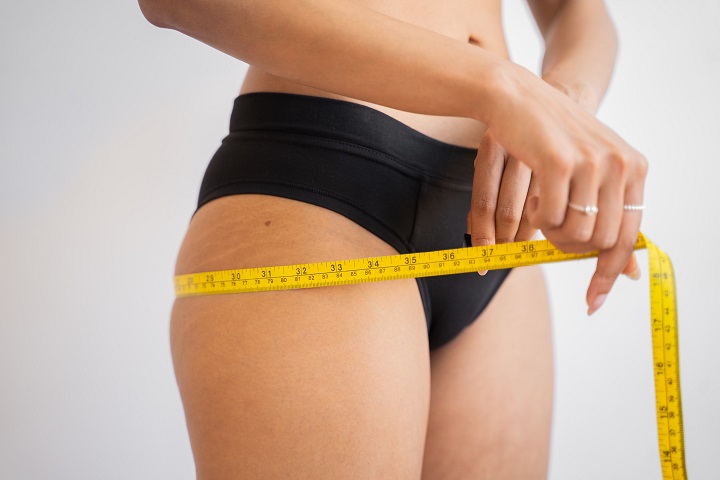Testosterone is decisive in our weight, accumulation of fat, heart, and bones. We tell you what to do to keep it at levels that help you with your figure and health.
We think of the hormone that gives men sexual vigor if we talk about testosterone. But, it turns out that the female ovaries also produce it and that having it at adequate levels influences us much more than we might think.
Table of Contents
1. Testosterone Helps Female Hormonal Balance
A specialist in Aesthetic and Anti-aging Medicine and author of Testosterone, the hormone of life (Ed. Alienta), explains, “the ovaries and the adrenal gland can release small amounts of testosterone over time.”
This hormone is “crucial for many physiological functions of women,” explains the specialist, who assures that “the cardiovascular, immune, metabolic, bone or sexual systems (of women) depend intimately on adequate concentrations of testosterone, which must be in balance with the female hormones estrogen and progesterone.
2. Changes In Muscle And Abdominal Fat
Testosterone influences our silhouette because it directly relates to the production of muscle mass. Between the ages of 20-and 30, men and women are at their best muscular moment, but from this age, explains the expert, “there is a progressive decrease until a global loss of 35-50% of skeletal muscle mass is generated at 80 years”.
This process causes us to lose muscle in certain parts, such as the legs or buttocks, and accumulate more fat in the belly, the so-called “apple” silhouette.
If we lose muscle mass, we gain weight more easily because muscle, to maintain itself, needs to consume more calories than fat. Muscles continue to burn calories even at rest, long after exercise.
The doctor assures that current research indicates a relationship between “central obesity, leptin, and testosterone.” And leptin is the hormone in charge of telling the brain to stop eating because we are already full.

So the more fat we accumulate in the belly, the more leptin is released, which interferes with the release of testosterone. And it is a vicious circle. It leads us to eat more than we need and to store fat in a dangerous place for our health.
3. Why We May Lack Testosterone
Leaving menopause aside, using a contraceptive method, having ovarian problems, taking certain medications (antihypertensives, antidepressants…), a malfunction of the adrenal gland, etc., can influence testosterone levels.
What can make us suspicious? Different symptoms can lead us to think about it, such as weight gain, having irregular and painful menstrual cycles, fatigue, muscle weakness, sleep problems or lack of sexual desire, mood swings, nervousness, feeling mentally slower, etc.
Your doctor will verify this with a blood test that should be done “10 to 20 days after the menstrual period begins” since our concentrations of this hormone fluctuate during the menstrual cycle. If the values are less than 25 ng/dL, the testosterone level is considered low.
4. What Should We Do If We Have Low Testosterone?
The doctor explains that there must be a therapeutic plan that includes diet, exercise, and rest. Only if this part is well balanced can it be medically assessed if it is indicated to follow a testosterone replacement therapy. And as the expert says, this therapy is usually applied to women in the “postmenopausal phase.”
5. Moderate Carbohydrates, Watch Protein, And Opt For Healthy Fats
The hydrates that come from fruit or vegetables are not usually conflictive. Instead, the doctor advises very moderate consumption of bread, pasta, or rice and even recommends consuming legumes and pseudocereals instead (quinoa, millet, amaranth…) in portions adjusted to each person’s exercise and their need to lose weight. And belly fat.
It is not usually expected, but protein deficiency can lead to “a decrease in the production of sex hormones.” Therefore, its lack is related to decreased muscle mass or marked physical fatigue. There are usually no problems if a proper diet is followed, but there are times, such as menopause, when it could be recommended to increase its consumption.

Not just any fat. Excluding fat from the diet can “generate physiological problems in the body such as a lack of fat-soluble vitamins or steroid hormones,” and testosterone is precisely a steroid hormone. Therefore, it must be included but opting for healthy sources, such as nuts, olive oil, avocado, etc.
6. There Is No One Diet Better Than Another, However…
The doctor explains that even vegan diets can help if they are well designed. However, one of the ones that seem most appropriate to him is intermittent fasting because “it has managed to improve fasting insulin and glucose levels,” which means that there is less insulin resistance and that it is easier to eliminate insulin—abdominal fat.
7. Sport: Balance The Aerobic And Anaerobic
Although it is said that any sport is worth it, this expert disagrees. “An excess of aerobic sport (running, swimming, etc.) can help you lose fat and muscle mass, loss of bone mineral density, or even loss in the release of sex hormones (testosterone or progesterone.
“Therefore, this expert recommends combining aerobic activity with anaerobic activity, such as weight training, which helps maintain muscle mass. For sedentary people, he recommends at least “walking for thirty to forty minutes in the morning on an empty stomach.”
8. Stress, Enemy Of Testosterone
“Chronic stress can throw off your sex hormone functions whether you’re a man or a woman,” she says. The expert assures that sustained stress over time can cause women to suffer “amenorrhea or even premature ovarian failure before menopause.”
Both sports and cultivating hobbies, maintaining a good network of social relationships, or following stress control therapies are more than recommended to keep nerves at bay and ensure a good night’s rest.
Beauty Gazelle
Related posts
Meet the Author
Beauty Gazelle is a multi-concept Beauty News & Trends Blog. Our Gazingly blog posts are beautiful perfect enough. Beauty Gazelle is a clean and functional blog with many useful features that deliver an amazing user experience to our clients and readers.
Learn more
